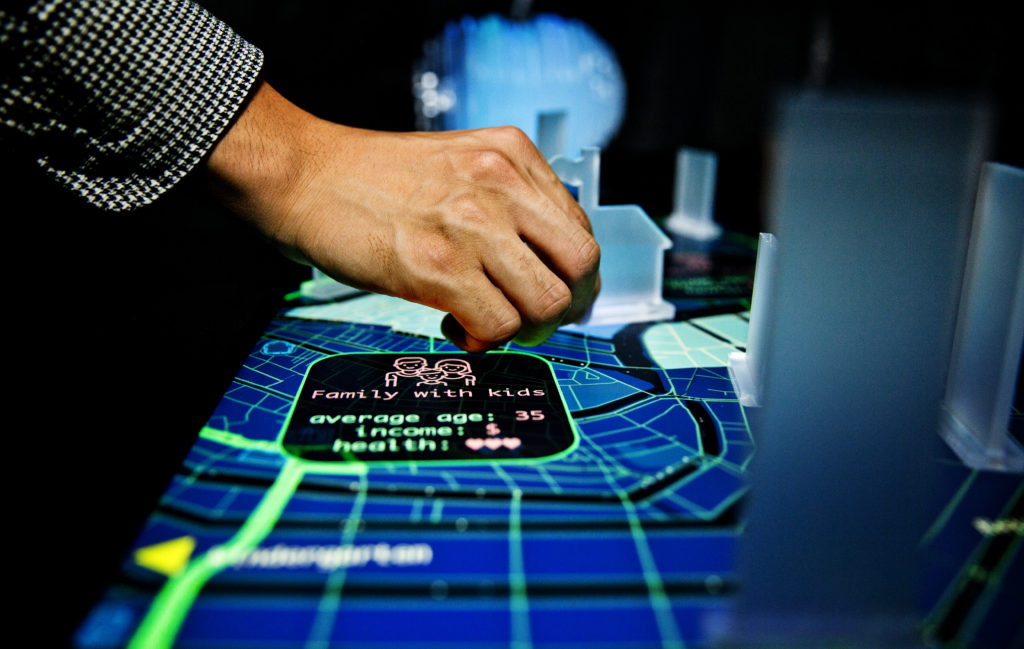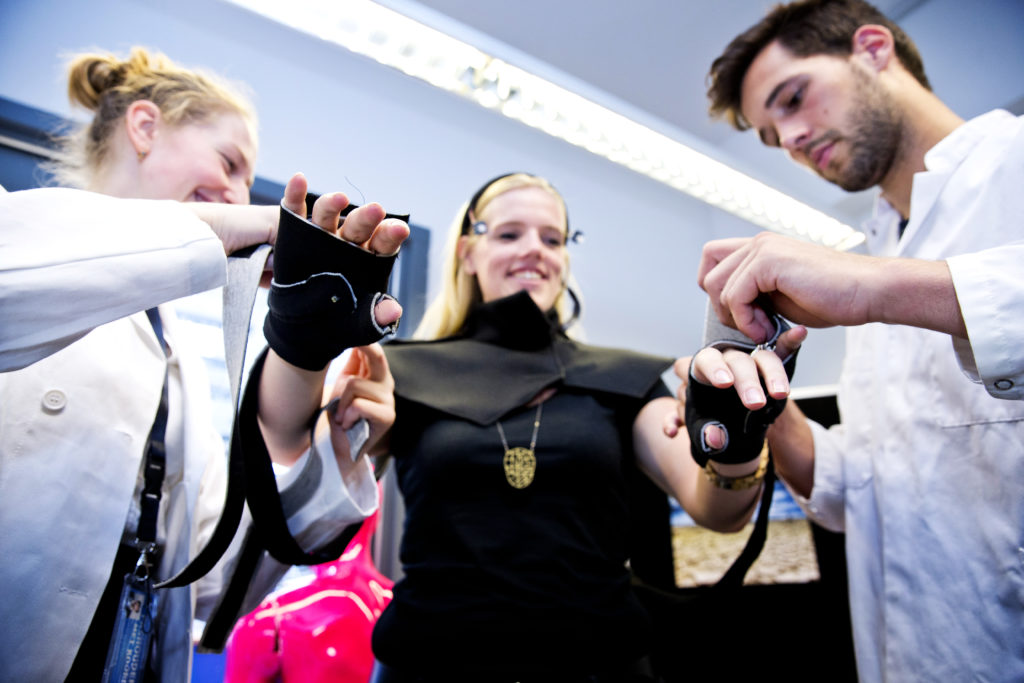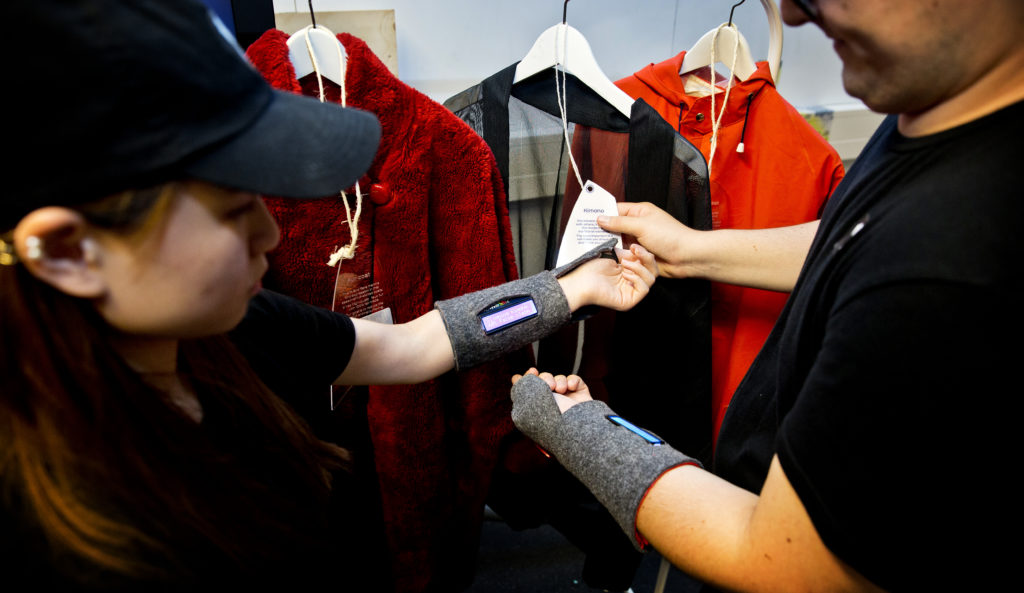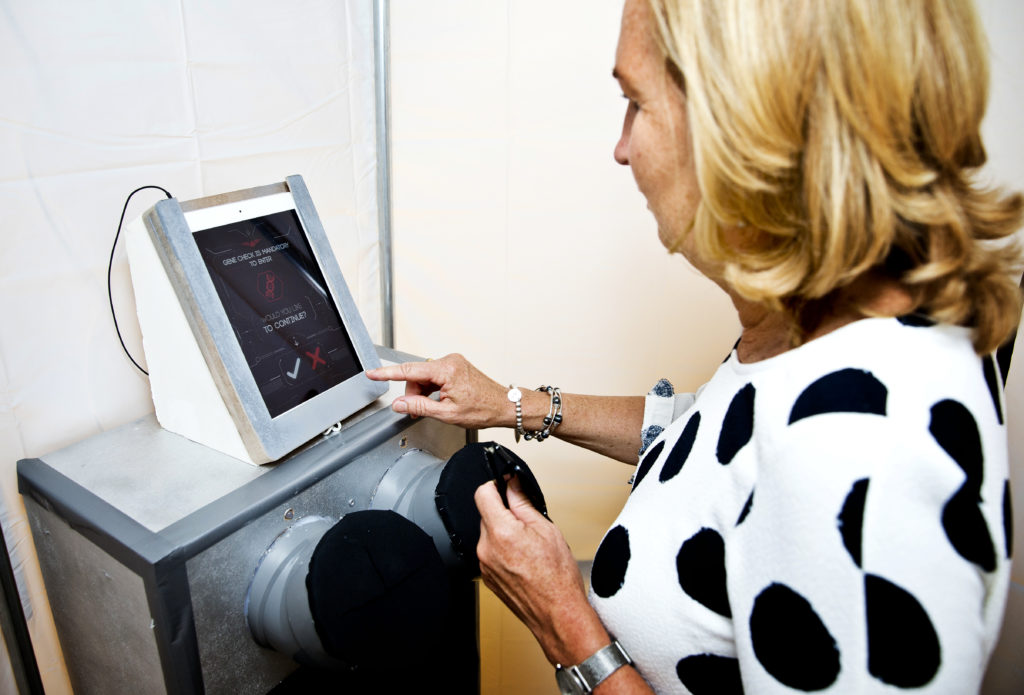Interactive Technology Design (ITD) is a masters-level course that is offered as part of the DfI (design for interactions) MSc program at Delft University of Technology‘s Department of Industrial Design. The course introduces students to explorative prototyping as a “make first” approach to design, promoting the use of prototyping not just as a way to evaluate final concepts but as a way to come up with and flesh out those concepts.
In 2017 the course was dedicated to critical, speculative futures. Students were assigned one of seven themes (each conveying a societal issue with important future consequences), and were asked to design an interactive experience that communicates critically a possible future based on those themes. Instead of solving a problem, students were asked to communicate the problem. In the course syllabus we write:
Good prototypes will both be recognizable as belonging to these speculative worlds, and be capable of communicating elements of that world in a critical manner – using future developments as a way to problematize the present.
Themes included extended lifespan, immigration and refugees, urban development, hackable emotions, data and surveillance, labour, and information overload. The course’s coaching team was made of Aadjan van der Helm, Tomasz Jaskiewicz, Wouter van der Hoog, and me.
The design process combined futuring techniques with rapid prototyping, providing students with a playful, experimental environment in which they could be both creative and critical. In each class day (~9 hrs) student groups were asked to complete a full prototyping cycle: develop a future scenario, design and materialize an interactive prototype that communicates the scenario, and test the prototype with ‘real’ users.
The overall process included several steps:
- Developing familiarity with the theme/brief, including desk research and guest lectures from within and outside the department.
- Creating a two-driver scenario (resulting in a 2×2 scenario space) that takes place in the near(ish) future (20-30 years ahead).
- Developing a narrative that conveys one of the four scenario possibilities as an everyday situation, and identifying an interactive object within that story.
- Designing, building, and testing the interactive object.
- Reflecting on the day’s process in a short report.
The courses’s final exhibition featured 20 group projects. Each group was given a dedicated space, where students and visitors role-played the future situation using costumes, props, and additional media such as videos and music. Vice’s Motherboard reported on the exhibition here (in Dutch).
The top-five projects were invited to present demos in DeSForM 2017.
The AI Mayor
What if decisions about urban development were made by Artificial Intelligence?
The interactive experience played out as a faux public consultation: participant were asked to help the ‘mayor’ make a decision, only to find that the ‘mayor’ went ahead and made whatever decision he desired. The “blackbox” of urban design was seen for all of its opacity.
Group members included Tomo Kihara, Zoe Vos, Martijn Weber, Ziyi Zhang.
Lonely Astronaut Training
What if astronauts going on long solo missions had to receive special training for the loneliness such missions imply?
The experience included proximity detractors, sound and vibration messaging that went off whenever the astronaut/participant came into close contact with others. Loneliness became a teachable emotion.
Group members included Mina Boogaard, Claudia De León Castro, Tanja van der Heide, Anna Koolen, Michael Speek, Freek Trimbach.
The Datactor
What if it became practically impossible to assert the authenticity of consumer products?
Participants wore special gloves that upon contact with a product showed some relevant information about it. When several participants look at the same product the glove shows different, contrasting information. ‘Fake’ product information became a reality.
Group members included Renan Jordano de Barros, Irene van Houten, Jen Liu, Tamara Monster, Celeste Volpi.
The Republic of Tirania
What if refugees seeking asylum had to undergo genetic modification as a condition for being granted entrance?
Participants underwent scanning and simulated genetic modification in a small booth, after which they were given a fake passport in which white skin was turned dark and vice versa.
Group members included Wikke Alphenaar, Wies van Lieshout, Gijs Louwers, Guillermo Meza Perez, Yong Park.
Data Afterlife
What if our data became a living epitaph after our death?
By using a special device, participants could listen to the data traces of the dead. The device triggered voice playback once it came into proximity with a burial wall. Participants were also asked whether they would be willing to leave, posthumously, their data memories behind.
Group members included Thomas van Arkel, Mengyin Dai, Min Huang, Marije Schokkin, Elise Wabeke.
Next year’s iteration will be dedicated to speculative urban futures.





